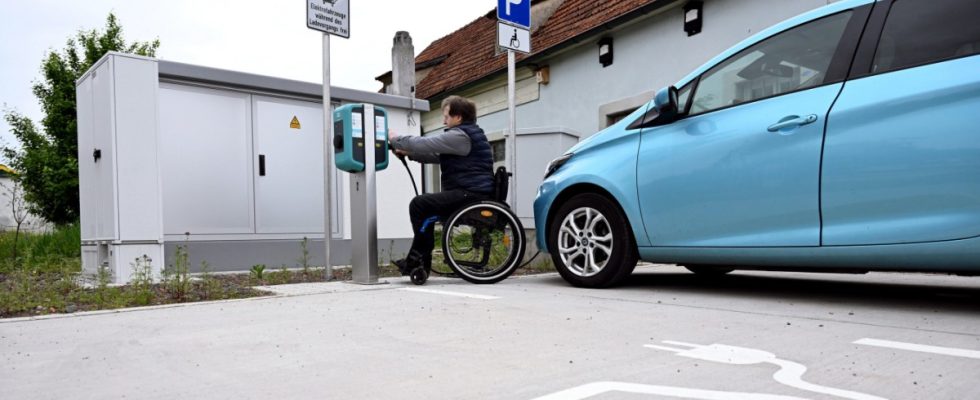The charging station network for electric cars is growing – but people with disabilities cannot use many charging points because they are not barrier-free. But that should change. “It is very important to me that the publicly accessible charging infrastructure for electric cars is also barrier-free,” said Social Affairs Minister Ulrike Scharf (CSU).
The Free State took up the issue of accessibility at charging stations “proactively” some time ago, according to the Ministry of Economic Affairs. In the “Publicly accessible charging infrastructure for electric vehicles in Bavaria 2.0” program, accessibility was defined as an additional criterion. This means: Funding increases when accessibility is taken into account. The view is changing. “However, charging stations available on the market today do not meet all accessibility requirements. Manufacturers urgently need to make improvements here,” the ministry said.
In Hofheim in Lower Franconia, for example, a barrier-free charging point has now been created. As Günter Lieberth from the Haßberge district energy consultancy said, there was the idea of installing an electric charging station in the disabled parking space. He noticed that there were no uniform standards. The challenges for people with disabilities who want to charge an electric car are indeed diverse. Curbs, hidden displays, height and length of the cable.
Lieberth and his colleagues helped themselves by having an affected employee of the town hall take part in the planning. There are now official guidelines for barrier-free charging infrastructure, published by the Federal Ministry of Transport. And more and more municipalities are paying attention to accessibility when installing new charging points.
Take Erlangen, for example: “So far, drivers using wheelchairs or with limited mobility have often been confronted with numerous barriers at electric charging stations,” wrote the municipal utilities of the central Franconian city a few months ago. “The parking spaces are too narrow, the columns are difficult or impossible to reach or the displays are mounted too high. In most cases, the charging stations are not even usable for people with disabilities.”
In the future, the focus should be on ensuring that the charging points that the municipal utilities install are designed to be as barrier-free as possible. There was a participation process with affected people and associations to design the pillars so that people with disabilities can also charge their electric cars without any problems.

